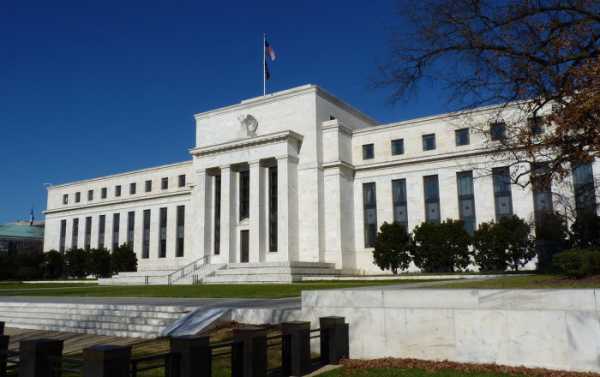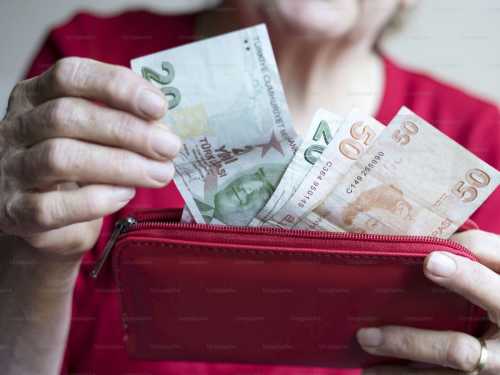
The Federal Reserve is expected to undertake two more rate hikes by the yearend amidst the ongoing acceleration in the economy, but economists warn that elevated tensions in international trade could pose a challenge for the central bankers.
Kristian Rouz — The US central bank is widely expected to undertake yet another hike in its base borrowing costs during its ongoing policy meeting on 25-26 September. Economists believe solid macroeconomic fundamentals would be behind the decision, as US unemployment is near its record low, whilst a solid pace of hiring and modest wage inflation would support the move.
The Federal Open Market Committee (FOMC) is currently holding a two-day meeting in Washington and financial markets are focusing on the upcoming decision on rates, which will determine the further path of monetary policy.
The decision to hike rates would end the era of accommodative monetary policies, which started in the aftermath of the financial meltdown of 2007-2009. The rates would go up to the gauge of 2.00-2.25 percent, supporting domestic investment and savings-focused financial strategies.
“Financial markets should prepare for a more hawkish tone,” Joseph Lavorgna and Thomas Julien of French investment bank Natixis wrote in a note. “Another quarter of 4-percent real GDP growth coupled with faster wage gains will likely cause policymakers to err on the side of aggressiveness at some point.”
However, US economic growth is expected to moderate at around 3 percent in the third quarter, down from the robust 4.2 percent in 2Q18. Meanwhile, US inflation remains at around the Fed’s 2-percent target, but some economists believe the gains in prices are unsustainable.
US wages have grown roughly 5 percent over the past 12 months, but unequal distribution of this growth — with booming salaries in the oil sector and stagnant wages in the services — has produced little effect to consumer confidence.
“In light of the economy’s impressive growth momentum, the upward trends in wage and price inflation, and the limited overall tightening in financial conditions achieved so far, on net we think the risks to the funds rate are tilted to the upside,” a team of Goldman Sachs analysts led by Jan Hatzius said in a report.
Indeed, despite the higher central bank rates, many commercial banks have abstained from increasing consumer borrowing costs. This comes as household debt has expanded beyond the stunning $13 trln and the majority of heavily-indebted consumers would struggle to refinance or take new loans at higher rates.
In this light, commercial bank profits have squeezed in the retail segment, but overall, US financials are doing well for themselves due to the tax cuts enacted last December. Business investment and borrowing have increased as well, rendering the current economic environment even more favorable for the private sector.
However, the American worker is still struggling to adapt to the combination of higher inflation and largely stagnant wages. But the Fed’ expected rate hike could somewhat limit the ongoing rise in property prices and rents, and deflate what some call the property bubble — which could potentially encourage the consumers to ramp up their spending.
Economists also expect the Fed to reaffirm its commitment to the gradual pace of rate hikes, as the US economy is still in the process of adjustment to the changing landscape of international trade.
“I don’t think the Fed is going to come out and sound like they’re on the war path to raising rates,” Mark Cabana of Bank of America Merrill Lynch said. “I think they’re going to sound more measured: ‘the data has been strong, and we’re more confident in our forecast’.”
Some have suggested that one of the Federal Reserve’s main concerns at this point is the escalating trade tensions with Mainland China. Amidst the expected decline in Chinese imports and a possible drop in food prices at home, the Fed is seeking a monetary response aimed at compensating the affected consumers and producers.
A significant increase in borrowing costs could hurt American farmers, who have been reliant on the cheap credit and government subsidies of the past decade. The Fed’s mandate is now to encourage a sustainable mid-to-long-term rise in domestic investment — which would spur growth in industries that could absorb the output of export-oriented producers.
“We don’t see it in the numbers yet, but we’ve heard a rising chorus of concern” related to the elevated trade tensions, Fed Chairman Jerome Powell said back in July. By now, the central bank has already evaluated the first effects of the trade rift and the FOMC is expected to weigh in on the matter.
Fed policymakers said they expect the US economy to grow at least 2.8 percent for this entire year. However, this forecast is subject to a likely upward review in the months to come. The Federal Reserve Bank of Atlanta recently said in its GDPNow report that the US economy could accelerate to 4.4 percent in the third quarter,
This suggests the Fed would also raise rates in December, to 2.25-2.50 percent.
“Something pretty significant would have to happen for the Fed not to hike in December,” Tom Essaye of The Sevens Report said.
Sourse: sputniknews.com






